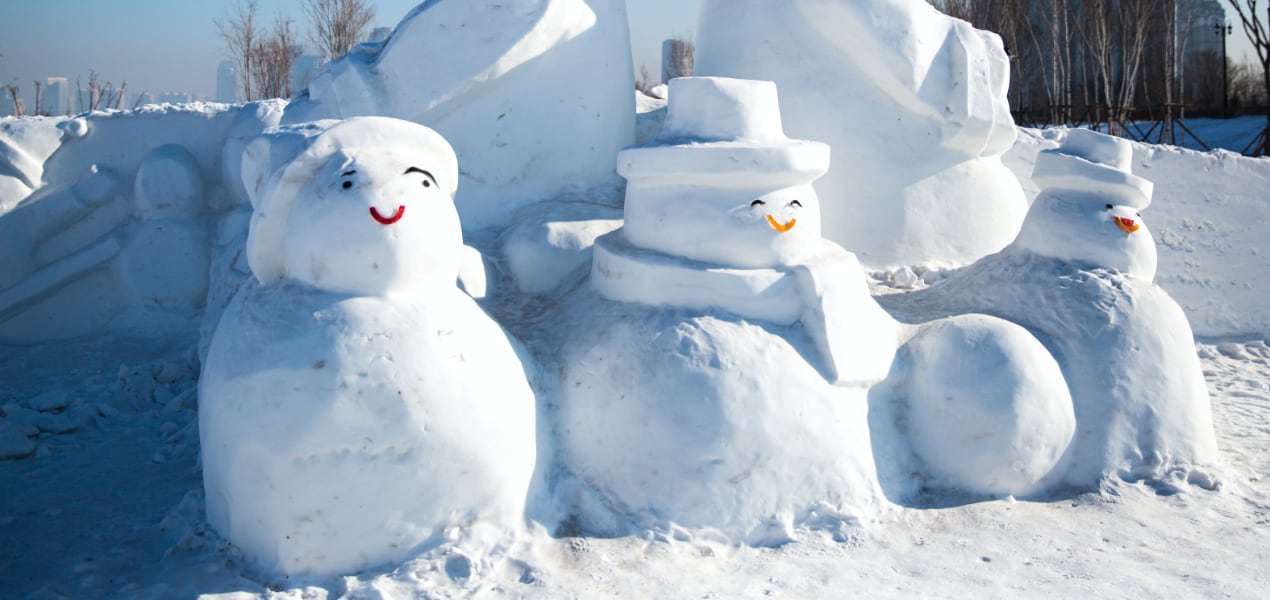Harbin Weather in February

February is when Harbin transitions from late winter to early spring. Days are mostly sunny with little precipitation. Temperatures gradually rise, with daytime highs starting to exceed freezing. Large daily temperature fluctuations persist.
| Average Maximum | Average Minimum | Highest Maximum | Lowest Minimum | |
| ℃ | -8 | -18 | 0 | -28 |
| ℉ | 17.6 | -0.4 | 32 | -18.4 |
Sunny Days: 6 days
Cloudy Days: 9 days
Rainy/Snowy Days: 5 days
Overcast Days: 8 days
What to wear and bring?
Early February
Daytime temps (-8°C to -4°C) contrast sharply with nighttime lows (-20°C to -17°C). Layer wool underwear, thick sweater, and long down jacket. Add scarves, gloves, hats. Non-slip shoes required. Women in skirts should wear fleece-lined tights.
Mid-February
Temps rise to -5°C to 0°C (day) and -14°C to -12°C (night). Wear wool sweater under mid-length down jacket. Layer at night. Use moisturizer and sunscreen even with weak UV rays.
Late February
Daytime highs reach -2°C to 3°C, nighttime lows -12°C to -9°C. Freeze-thaw cycles create icy roads. Layer thin sweater under lightweight jacket. Carry umbrella and avoid icy areas.
Key Tips
- Layer clothing for 10°C–15°C daily swings
- Pack anti-slip shoes for hazardous roads
- Avoid buildings due to falling rooftop ice
- Use N95 masks during foggy/hazy mornings
Touring Harbin in February
February is winter in Harbin. You can visit the International Snow Sculpture Art Expo in the Sun Island Scenic Area. It's the birthplace of Chinese snow sculpture art and is known as "the world's largest ice and snow carnival". It's also one of Harbin's main winter attractions. To enjoy it better, go early at the end of February to avoid peak times. Remember: the expo closes on February 26. Make sure your trip is planned before that date!
FAQs: Visiting Harbin in February
Is February too late for Harbin’s Ice Festival?
No! The Harbin International Ice and Snow Festival runs until late February, but the Sun Island Expo closes on Feb 26.
Can I wear sneakers in Harbin during February?
Avoid sneakers! Opt for anti-slip boots to navigate icy roads safely.
Drop us a line and we'll connect you with the top China expert in no time!